Plant Profiles dive deep on one plant variety each month. They are meant to provide you with enough information to make good growing decisions. A desire to grow gorgeous flowers is one thing. However, discerning if a particular plant is right for you and your climate is a whole other ballgame.
My intention here is to give you as much practical information to make these decisions. However, I’m going one step further and taking you completely behind the scenes to share exactly what has worked for us as well. For this reason, Plant Profiles are broken up into what I’m calling the “Nuts and Bolts (N&B)” and “Behind the Scenes (BTS).”
If you haven’t already, please be sure to read the FFY Introduction to learn more about how Plant Profiles are organized.
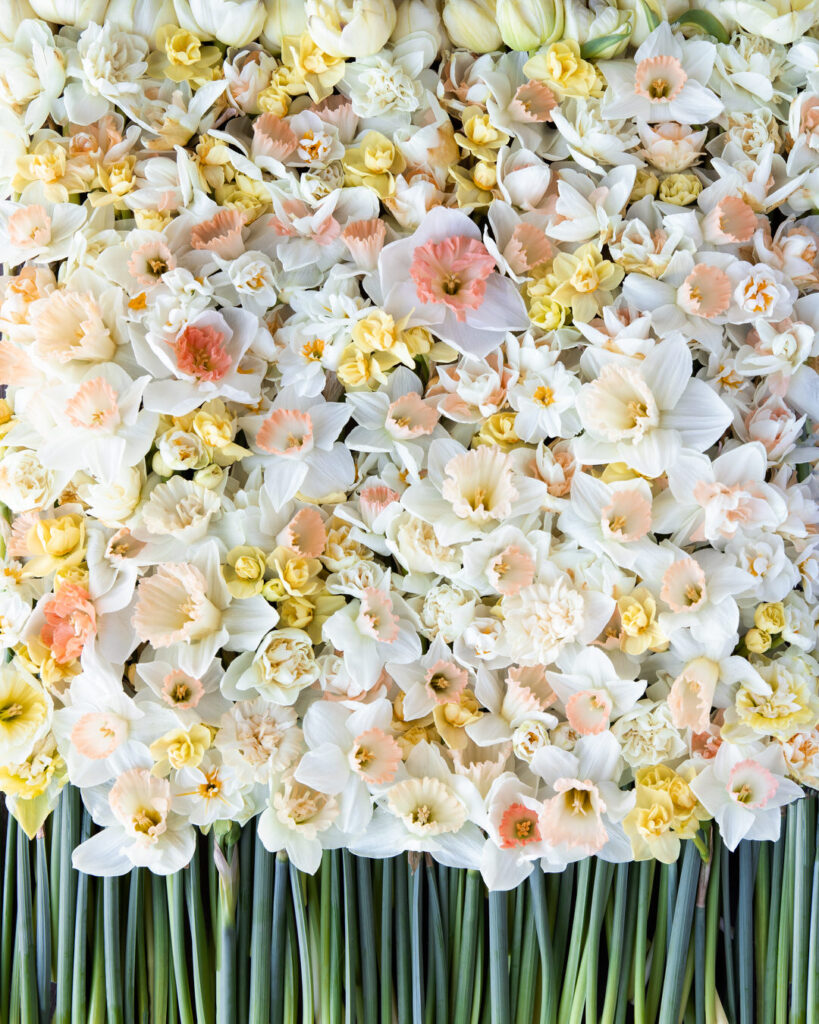
Primary Sources
The primary sources for the N&B portion come from:
- Postharvest Handling of Cut Flowers and Greens: A Practical Guide for Commercial Growers, Wholesalers & Retailers (Dole, Stamps, Carlson, et al).
- Specialty Cut Flowers, 2nd Edition, Revised & Enlarged (SCF): Industry standard for both new and experienced growers on the production of annuals, perennials, bulbs, and woody plants for fresh and dried cut flowers (Allan M. Amritage and Judy M. Laushman)
- Johnny’s Selected Seeds (Johnny’s): Johnny’s has been in the business for 50 years, with a research farm dedicated to finding the best seeds and tools for farmers and gardeners
- BOSTON Ornamental Terminal Prices. Specialty Crops Market News Federal – State Market News Service, USDA
Zone Considerations
- Johnny’s Selected Seeds research farm is located in Zone 5a Maine
- SCF references research for Zones 3–9
- My farm, Petal Back Farm, is located in Zone 4b Wisconsin
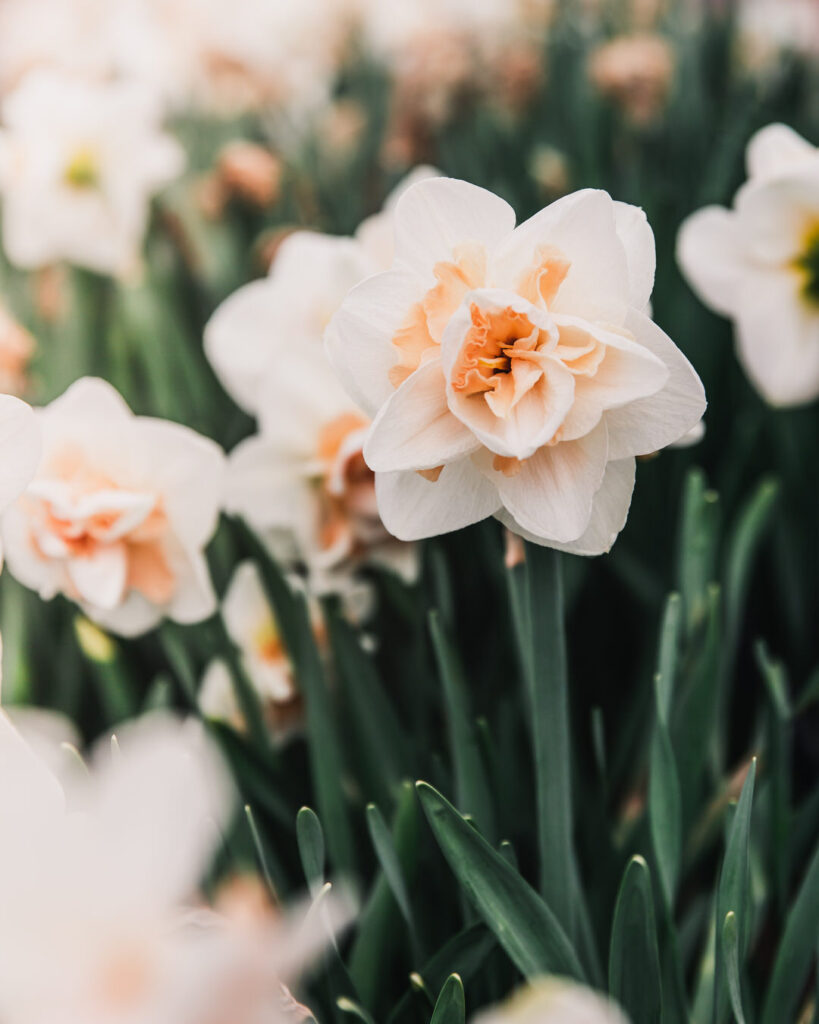
General Information: N&B
- Latin Name Name: Narcissus
- Common Name: Narcissus, daffodil
- Origin: Spain, Portugal
- Days to Maturity: Early to Late-Spring
- Life Cycle: Perennial
- Height: Varies by variety
The largest variety of daffodil species are found in Spain and Portugal and are thought to have been brought to Britain by the Romans. Commercial growers force narcissus in greenhouse production, while small flower farms typically grow them as perennials in field production (which is what we’ll focus on for this plant profile). In all but the warmest areas, narcissus will perennialize.
General Information: BTS
When I was considering plant profiles for the first year of FFY, I knew I wanted to include Narcissus, because they are workhorses that don’t always get the attention they deserve. But, which month? Tulips are a staple crop for spring production on a flower farm, so I needed to share that too. I didn’t want them too close together, because I think that Narcissus get overlooked because of tulips. And really, they shouldn’t.
Narcissus offer a few things that tulips do not. While tulips are treated as annuals on a flower farm, narcissus are treated as perennials. Not only will you have them every year, they multiply after 2–3 years, providing you with *more* blooms (beat that, tulips!). Narcissus also offer something else tulips do not: fragrance! I mean, seriously, is there anything better? In the variety section, I share my absolute favorites for scent 🙂
I’m also finding that they are gaining in popularity with florists. In fact, whenever I post a photo on social media, it is no fail that my florist pals text me: wait, you have these right now?! And I’m like YES, sorry (I’m terrible at availability lists sometimes). What I think is most important is growing the more unexpected varieties. I took a design course with Rachel Lunghi and she created stunning pieces with narcissus and Clare de Lune peonies. I love her work and find it to be a good reminder that great design doesn’t always mean a crazy amount of ingredients (I mean, just look at this bridal bouquet with only spirea and La Belle Epoque tulips). I digress . . . .
What I love most about narcissus as a cut flower:
- Easy to grow
- One of the first flowers of the season to bloom when everyone is super hungry for flowers
- Flouncy blooms that are fabulous for design work
- Work for retail, florists, and weddings
- Decent storage (and can store dry)
- Nostalgic flower
- Can sell by the bunch
- Perennial (stock only increases over time, making them a good investment)
- Rarely have pest or disease issues
- FRAGRANCE!
But every rose has its thorn, right? Potential shortcomings:
- Sappy stems
- Stems can get crushed
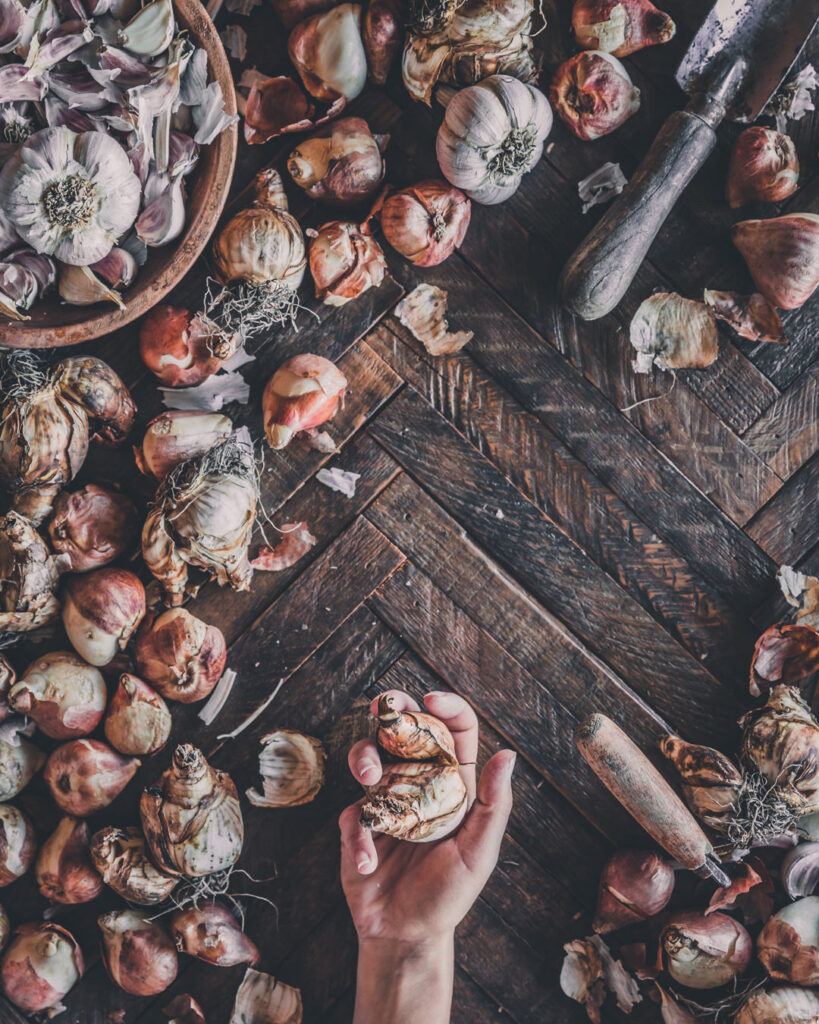
Propagation: N&B & BTS
Narcissus are perennials grown from bulbs, planted in the fall for spring production.
Environmental Factors: N&B
Temperature
While cold is not as necessary for stem extension in narcissus as it is tulips, chilling during the bulb’s dormant period is required for flower development (SCF). For this reason, growers in warmer zones should either purchase pre-chilled bulbs or chill their own. Bulbs should be pre-chilled at 38–45F (3–7C), for 16–18 weeks before planting. To pre-chill bulbs, place in a refrigerator. Bulbs can be refrigerated for longer than the recommended period but not for a shorter period. Be careful not to store bulbs near fruit, especially apples (Johnny’s).
Site Selection
Bulbs require a well-drained soil with a pH of 6,0–7.0. While full sun is ideal, narcisuss will tolerate partial shade. However, they require at least 5–6 hours of sun per day at the time of bloom (Johnny’s).
Environmental Factors: BTS
Here in Zone 4, our winters are plenty cold, so we do not need to worry about pre-chilling our bulbs (finally, a benefit to our cold zone, HA!). We have extremely sandy soil, so drainage is no issue. Daffodils are extremely common in our area, so they basically grow like weeds 🙂 (no complaints from me).

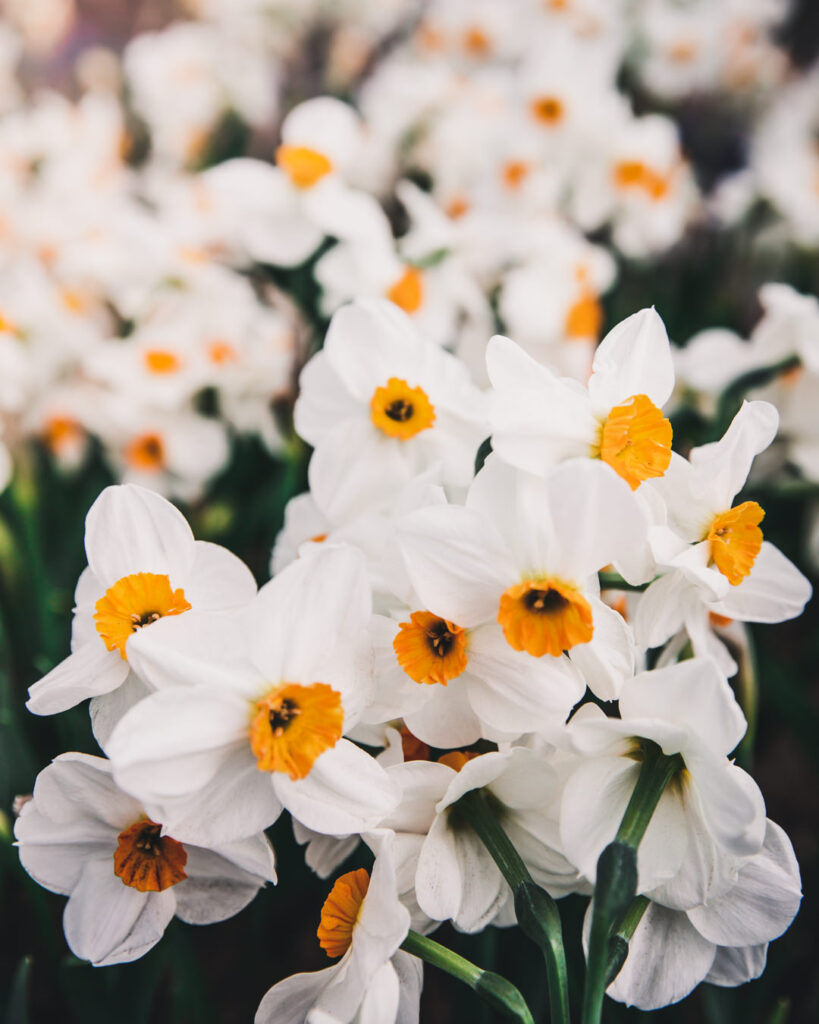
Planting: N&B
In most areas of the country, non-precooled bulbs should be planted in the fall. In the South (Zones 6b and 7b), plant in October to November; in the North (Zone 6 and lower) in September and early October. In the Deep South (e.g., Florida, south Texas, southern California), bulbs must be pre-cooled and planted in late November through December (SCF). Johnny’s recommends planting bulbs when the soil has cooled to 55F (13C) or lower, and nighttime temperatures consistently drop to 40–50F (4–10C), but before the ground freezes. Planting about 5 to 6 weeks before the ground freezes allows the bulbs sufficient time to develop roots.
According to Johnny’s, loosen the soil to a depth of 8–12″ to help ensure adequate root establishment. Most growers dig trenches or build raised beds. Adding a layer of compost to the root zone at planting will also aid in root establishment and plant growth. Press bulbs, upright, into the prepared soil (with the pointed end up and the fatter, flat end down). Cover bulbs with soil 2½–3 times deeper than the bulb height, or deeper in locations with light soil. For example, a 1½” tall bulb should be covered with 4–5″ of soil. As a rule of thumb, planting a bit too deep is better than planting too shallow. Planting each bulb at the same depth will help ensure that they all bloom at the same time. Water immediately after fall planting. As long as the bulbs are planted in the field, normal rainfall should suffice in all but the driest climates.
Planting: BTS
We plant our bulbs trench style, 6–8 inches deep. While I plant tulips really close together (like eggs in a basket), I give narcissus a little more room since their bulbs will multiply over time (2–3 inches). I either dig a trench or Matt digs out a trench with the tractor. I prefer the tractor method, ha, but it just depends on where the bed is going. Our falls typically have a lot of rainfall and our winters a lot of snowfall, so moisture is not an issue.
I have planted our bulbs straight into Thanksgiving, without issue, even in our cold zone (wholesale orders seem to continue to have delay after delay). I’m of the opinion that if the ground can be dug, you can still plant bulbs, but please do what is most-comfortable for you.

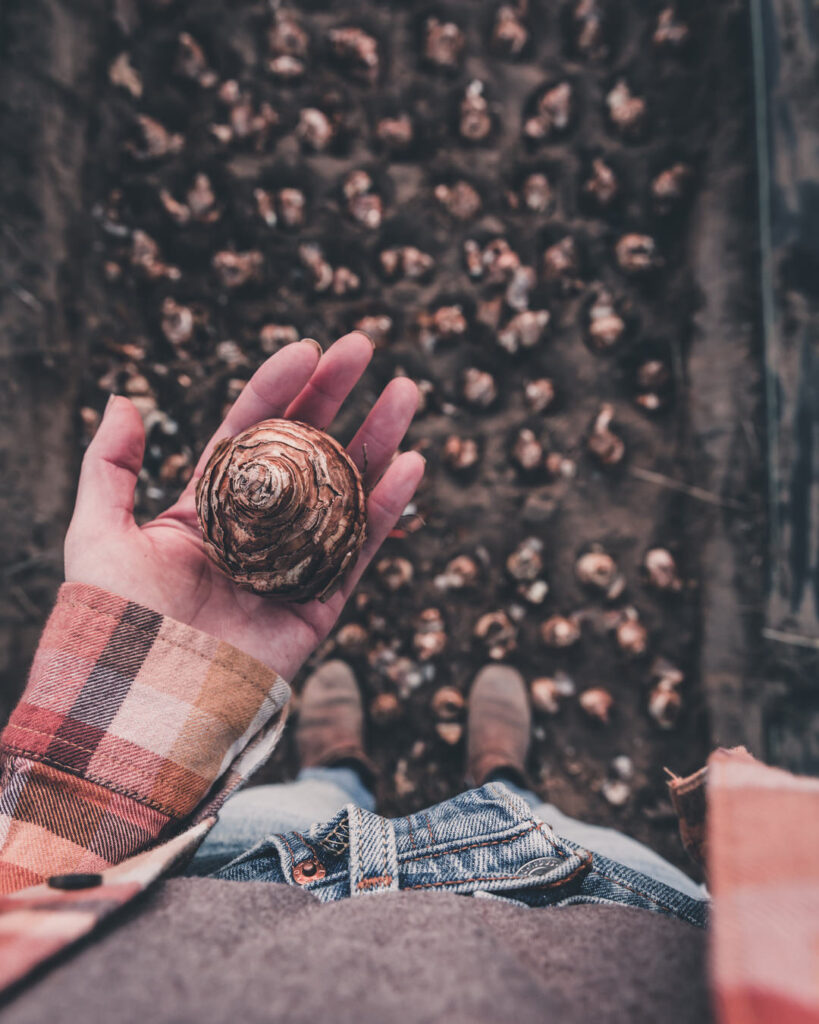

Succession & Groups: N&B
While not successions, per se, most sources recommend planting a variety of narcissus with different bloom periods (early, mid, late) to extend the season.
Successions & Groups: BTS
I like to plant a variety of narcissus from different groups in order to extend the season. In the Variety section, you’ll find a spreadsheet comparison of the varieties we grow here on the farm.
Nutrition: N&B
According to Johnny’s, first-year planted bulbs and those treated as annuals do not need fertilizer for flowering. Perennialized bulbs can benefit from the addition of compost or a slow-release bulb food on top of the soil from their second year one.
Nutrition: BTS
Regardless of what we grow, we compost our beds and add fertilizer based on our soil test. The only exception with narcissus is that we do not add any nitrogen. If you’ve been around FFY, you’ve seen how we fertilize organically. If you’re new, you can access this PDF that breaks down exactly what we do here.
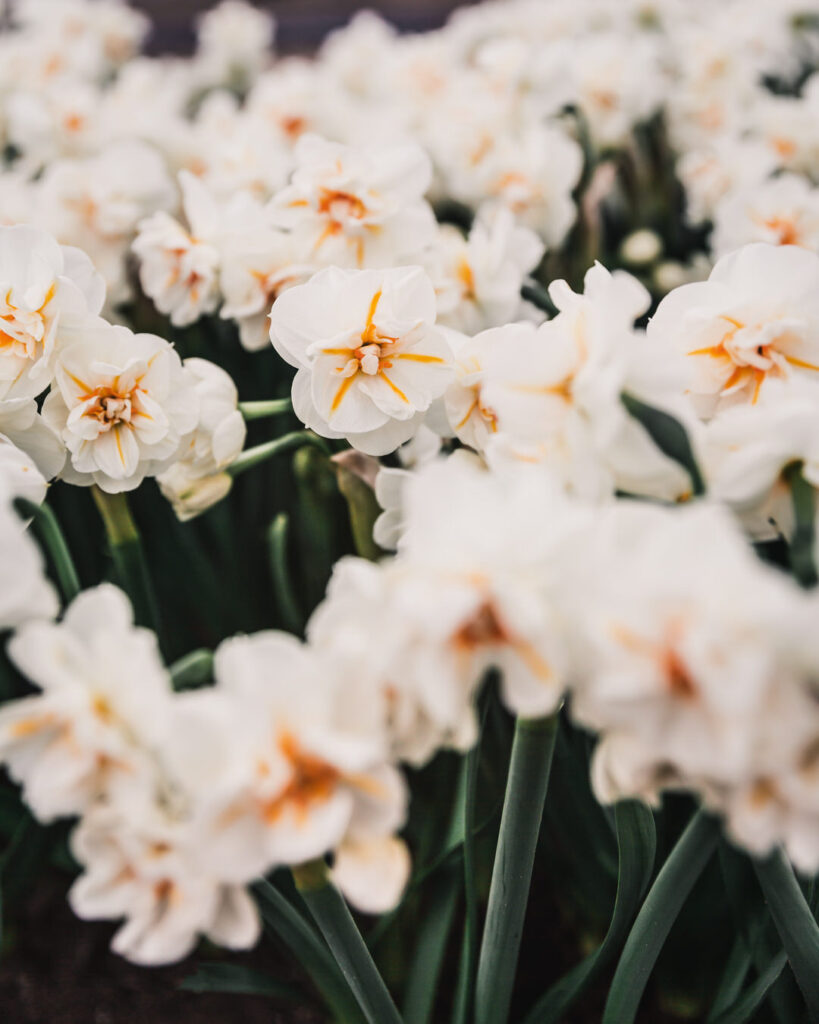
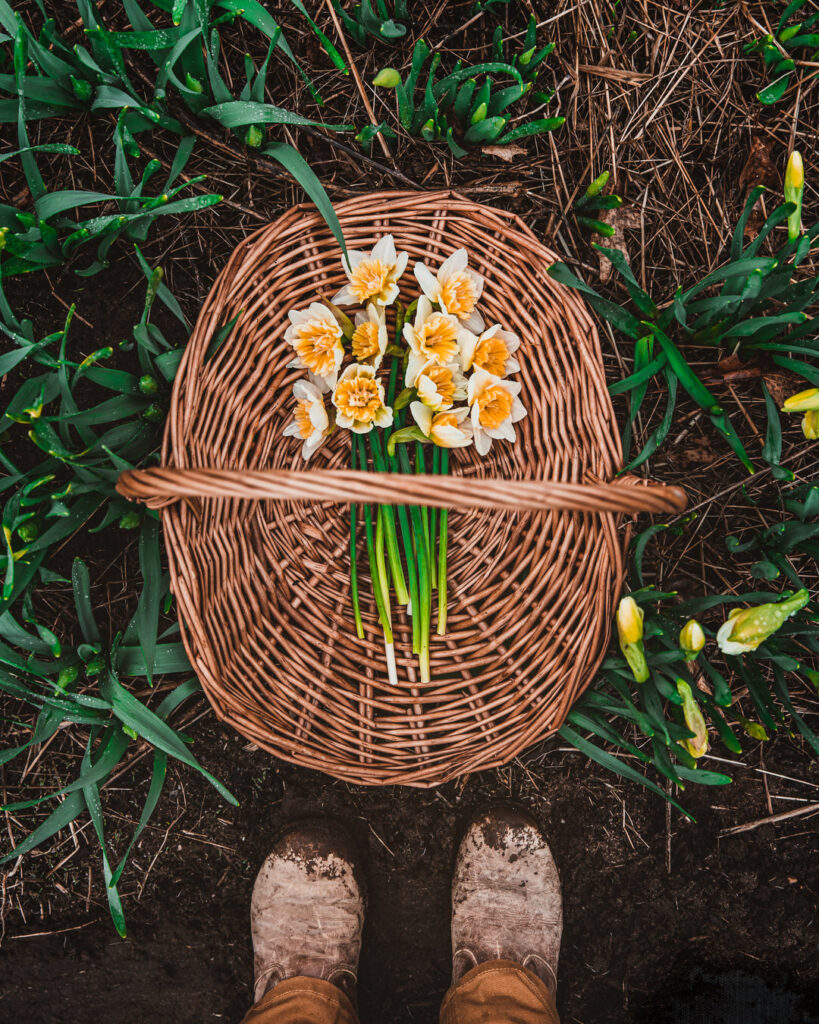
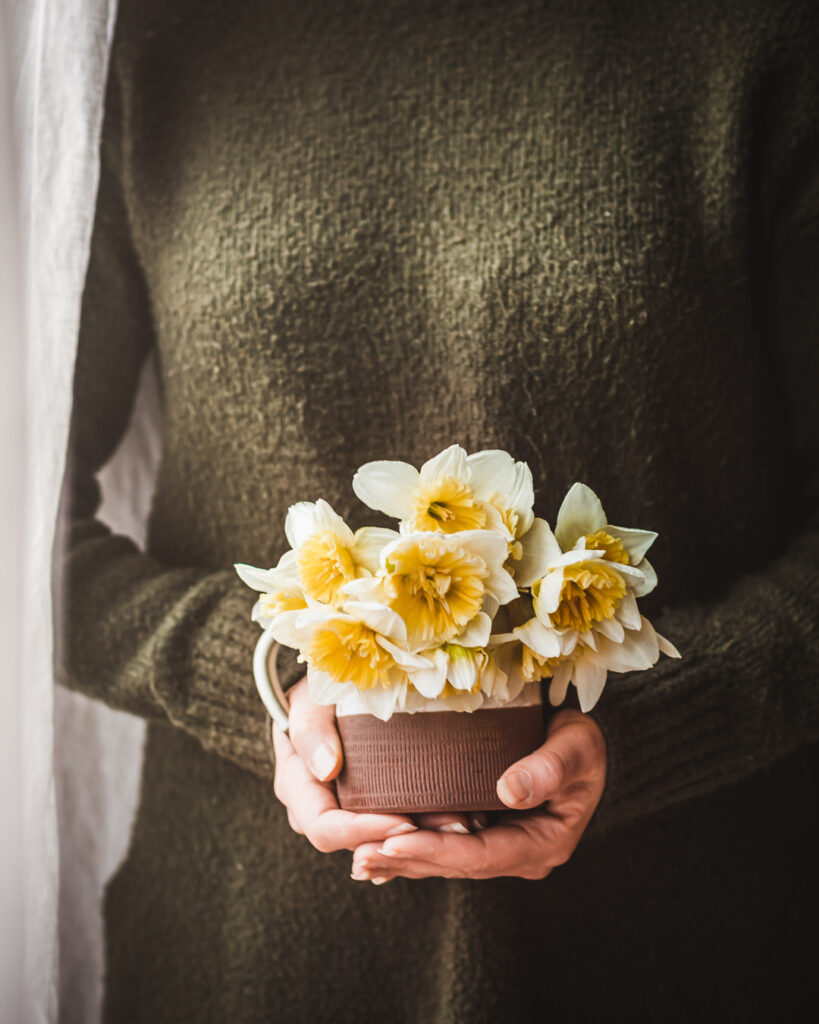
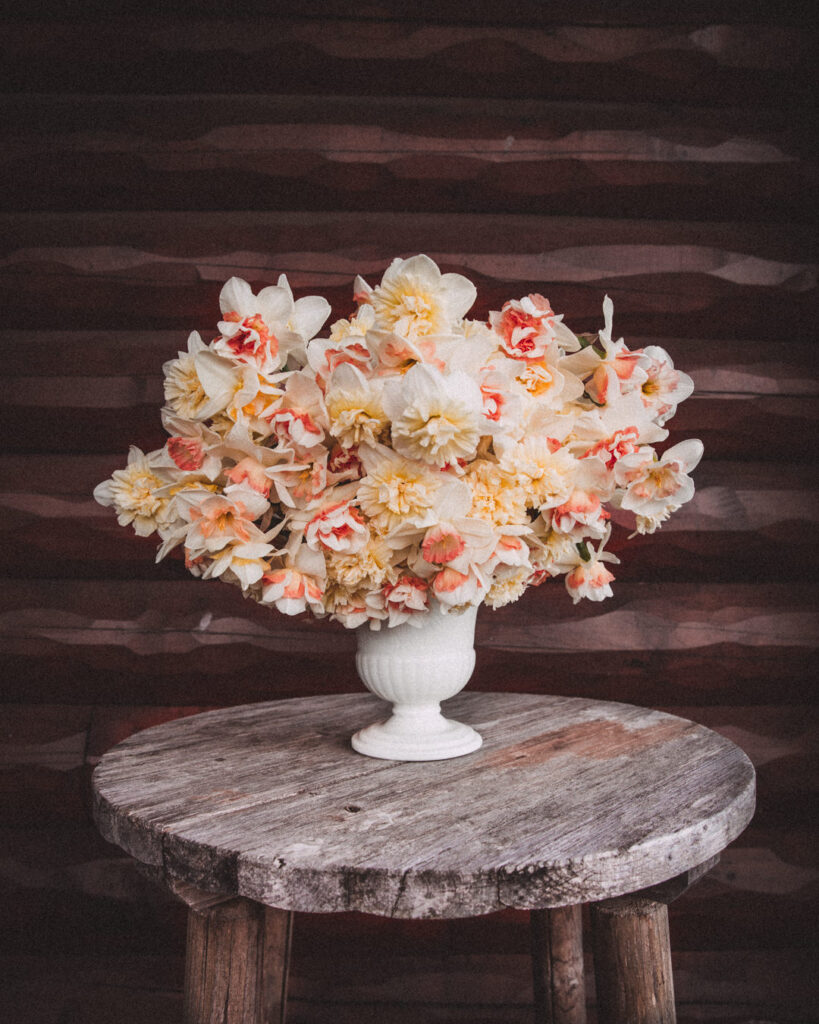
Drainage & Irrigation: N&B
Most sources recommend watering after fall planting and that normal rain and/or snowfall should suffice thereafter in all but the driest climates. Johnny’s recommends watering in at planting and then regularly watering until the ground freezes.
Drainage & Irrigation: BTS
I actually don’t water in our field-planted narcissus because we get rain in the fall and snow in the winter (I’ve never had any issues).
Pinching: N&B & BTS
Narcissus should not be pinched.
Bloom Period: N&B
Bloom period is highly depended on geographic location, environmental factors, and whether forcing, growing in a greenhouse or in the field. The length of time narcissus may be harvested also depends on the use of early-, mid-, and late-season cultivars. The length of winter temperatures below 45F (7C) and the rate of spring warming also greatly impacts harvest window (SCF).
Bloom Period: BTS
Typically, we have narcissus from April to mid-May.
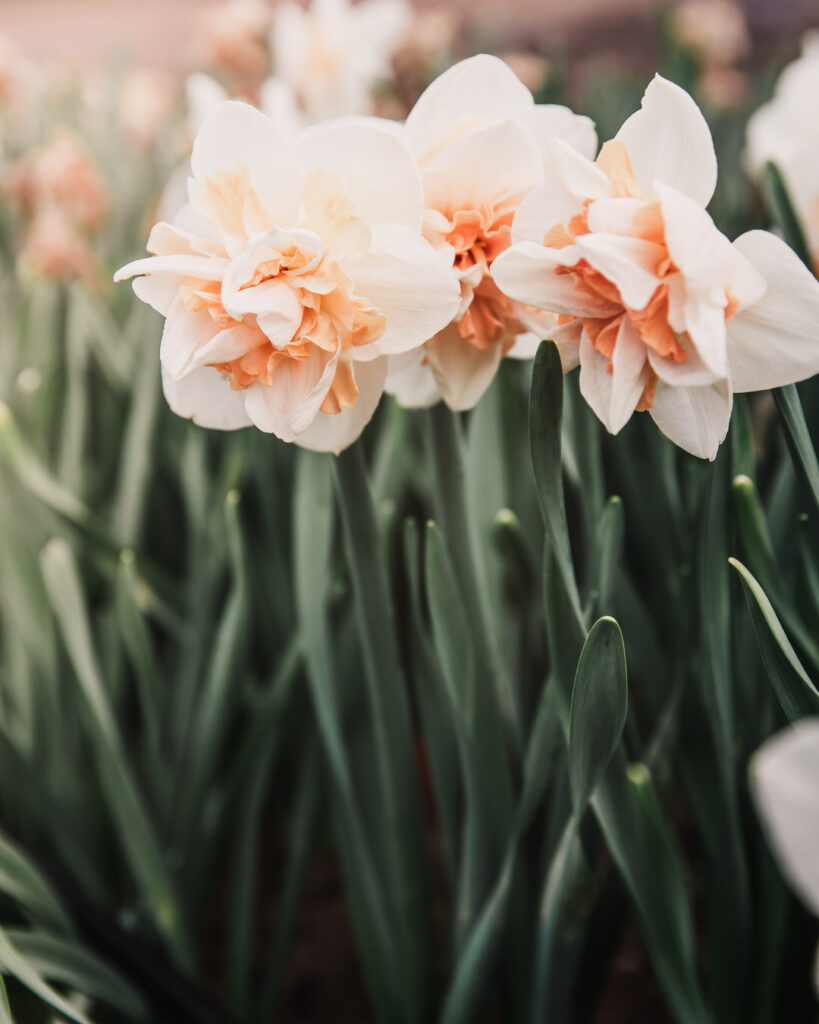
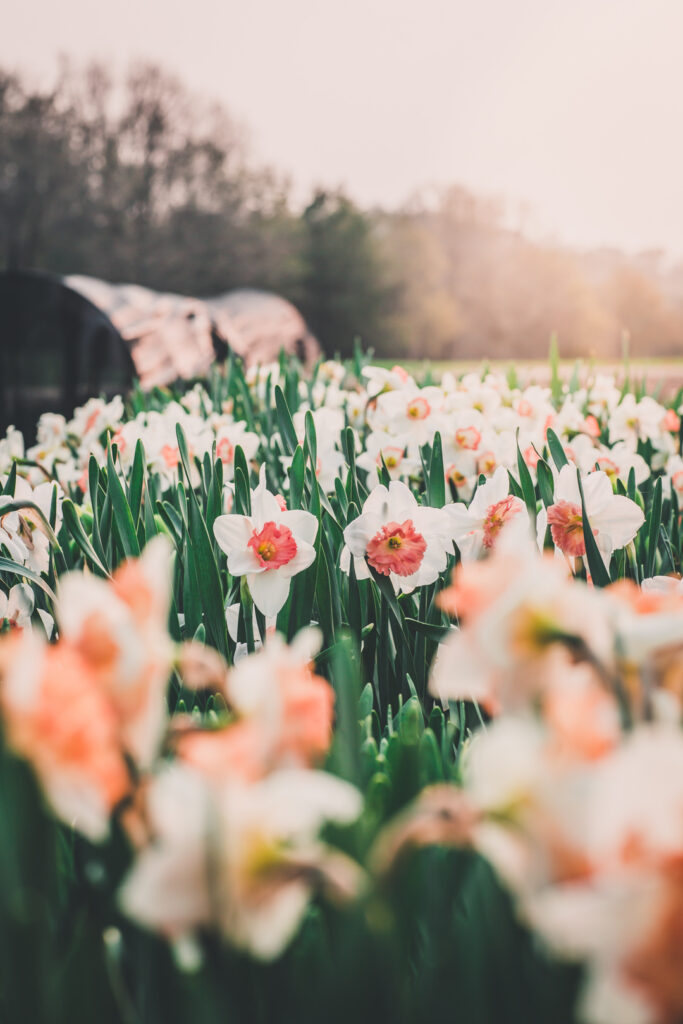
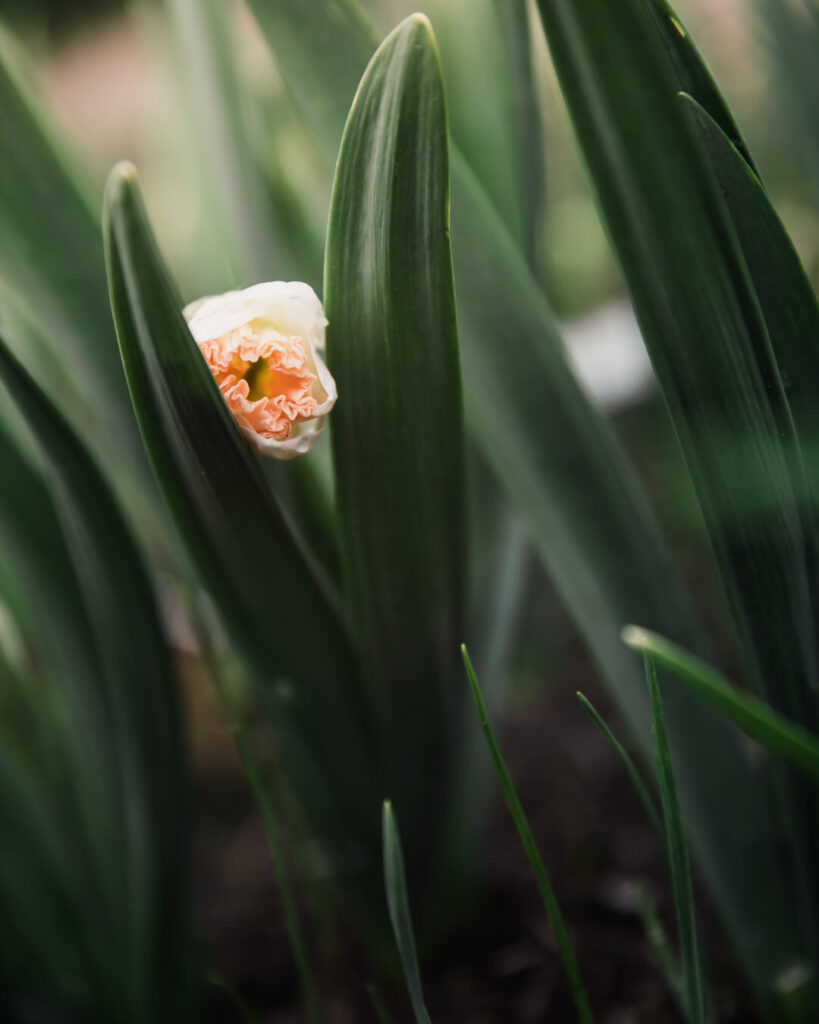
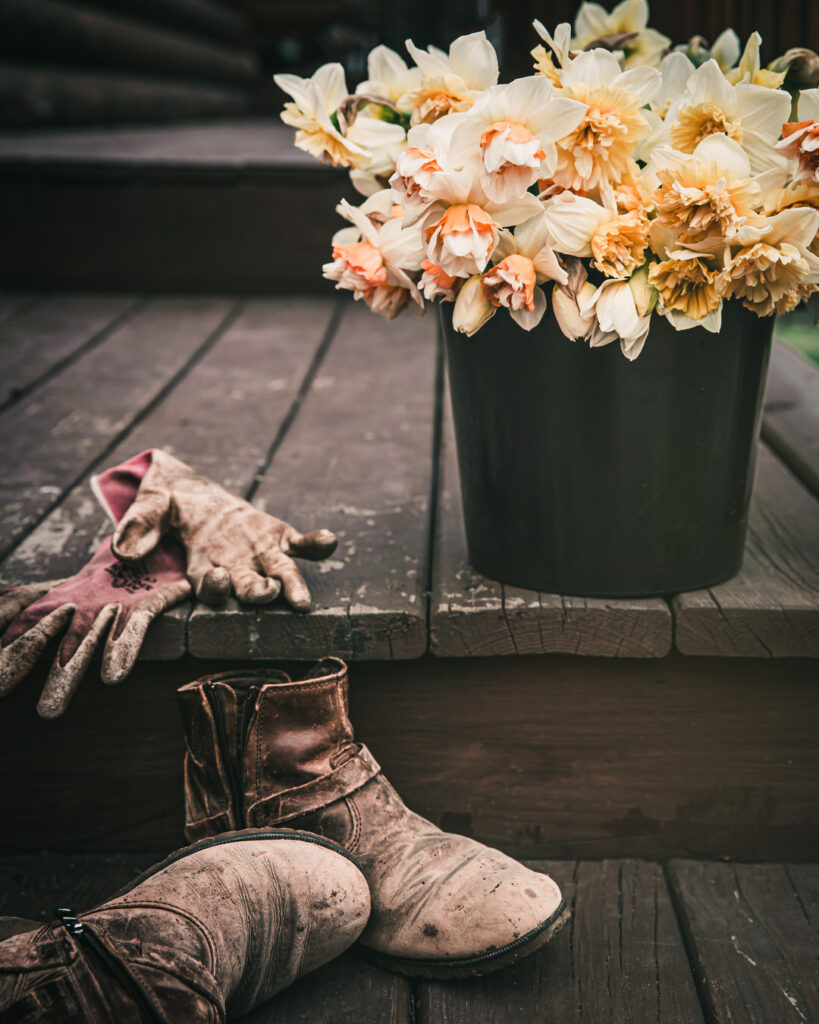
Harvest: N&B
Narcissus should be harvested at gooseneck stage when buds are closed but showing color and flowers are at a 90–120 degree angle from the stem. For maximum stem length, pull stems versus cutting them (Post-Harvest Handling).
Harvest: BTS
We harvest exactly as recommended above, with the personal note that sometimes pulling stems works like a charm and other times it does not. I try to get as low to the base as possible and gently wiggly while pulling. When cut, narcissus stems emit a mucilaginous toxic sap that can be irritating to skin, so be sure to wear gloves and protective clothing.
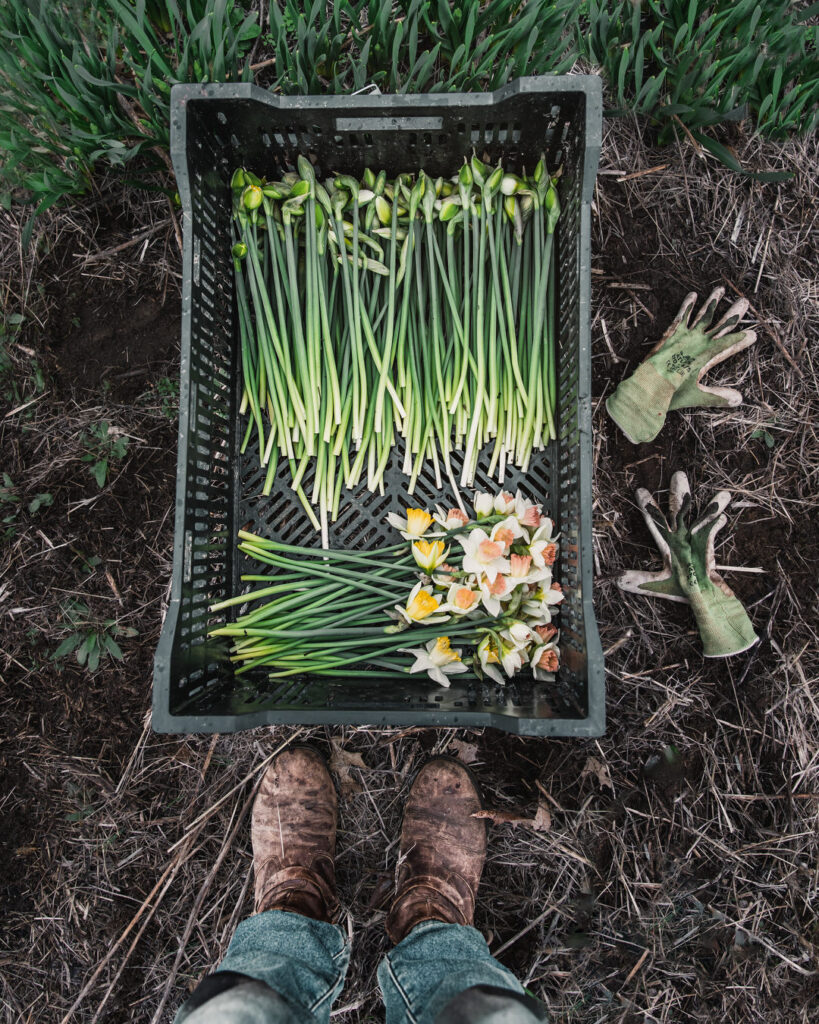
Post-Harvest Treatment and Storage: N&B
Expected vase life 5–7 days. According to Post-Harvest Handling, narcissus can be stored dry or in buckets with water. Those stored dry should be wrapped in polyethylene and placed in open crates in a cooler upright. They can be stored for 7–10 days at 32–38F (0–3C) with >90% humidity. The toxic sap from narcissus is damaging to many other cut flowers, particularly tulips, carnations, freesias, and roses, and significantly reduces their vase life. If they need to be stored or arranged with other flowers, they should be placed in either water for 12 to 24 hours, or in a 1–1.5 teaspoons per gallon bleach solution for 2 to 5 hours.
Post-Harvest Treatment and Storage: BTS
We store our narcissus at 34–35F in the cooler dry. I’ve actually never wrapped them and have stored them laying flat without issue, though perhaps it’s something I’ll experiment with in the future. We don’t store them long, though, just harvesting throughout the week and storing only for that week’s flowers (though I have stored longer for weddings).
Pests & Disease: N&B
Narcissus rarely have pest and disease issues. However, one potential disease that affects bulbs is basal rot. Aphids and bulb mites can affect narcissus, but this is usually in commercial greenhouse environments.
Pests & Disease: BTS
We have not had any pest or disease problems with our narcissus.
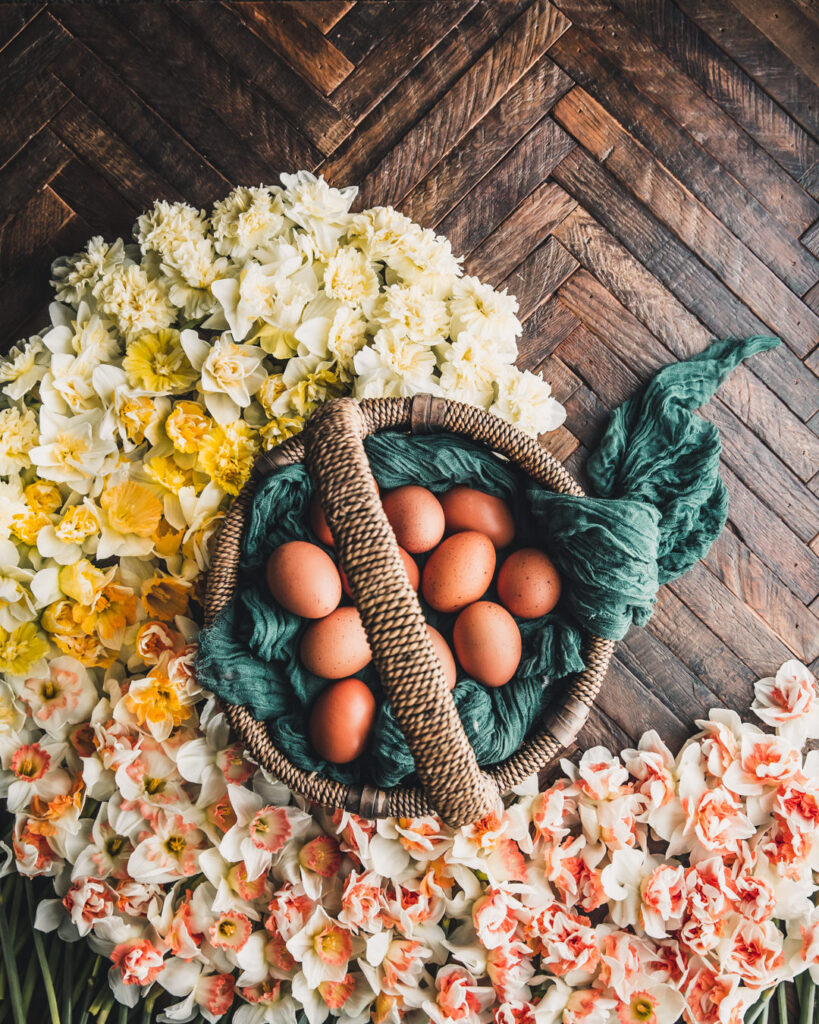
Variety Selection & When to Order: BTS Only
When & Where to Order
Typically, the saying was to order your bulbs for next season when your flowers were blooming. However, as demand grows in the flower world, orders are happening even sooner. This past fall (2022), I had growing friends tell me they already placed their wholesale order for planting this fall 2023 (i.e., blooms for the 2024 spring season). Ugh, that’s crazy! If that stresses you out, you are not alone.
I did ask our wholesaler (Ball) if that was necessary and/or caused issues for them. My rep said that ordering that early likely isn’t necessary but that ordering early doesn’t really cause an issue for them (the only thing for us as buyers is that prices usually are not available). Once fall winds down here on the farm, I will likely get my order in sometime this winter. I order through both Ball and Onings.
If you aren’t set up to order wholesale, you can order your bulbs retail in the fall. We are currently offering some of my top favorite varieties this year, and I upped your coupon code to 25% off (Code: FFY) so that you have the deepest discount available.
Variety Selection
As noted early, I like to grow a variety in multiple groups to help extend the season. Below is a table/comparison chart of all the narcissus we grow here at the farm. My favorites for fragrance are hands down Sir Winston Churchill and Geranium.
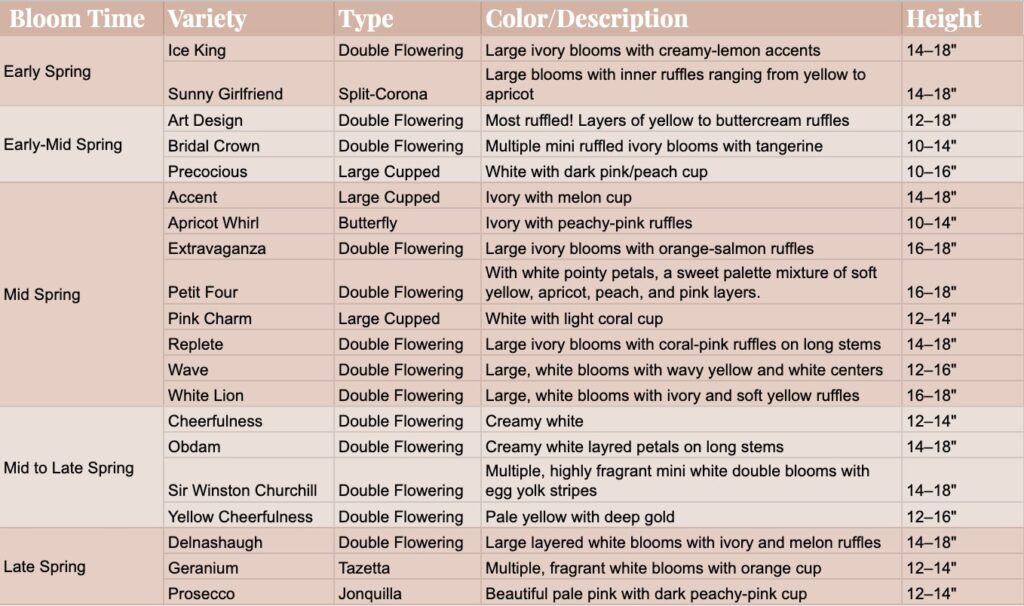
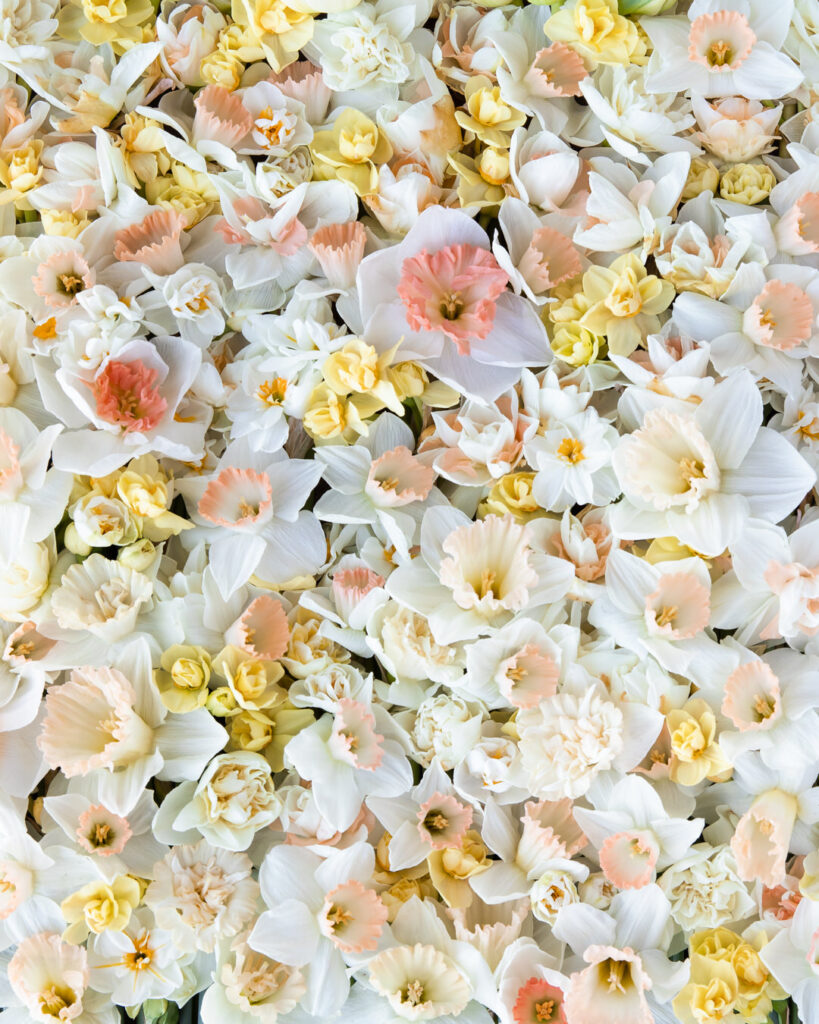
Pricing: N&B
BOSTON Ornamental Terminal Prices as of 18-APRIL-2023:DAFFODIL: OFFERINGS LIGHT. bunched 10s CD Long 10.0-15.00
Pricing: BTS
I charge $1.50 / stem (15 / bunch).
Design
We did not get into growing bulbs on a larger scale until our 2nd season flower farming. And that season, I was so focused on tulips (harvesting at the right time, storing), I only sold narcissus to florists by request. I was so busy learning tulips and too freaked out the sap would affect them. I laugh thinking back on this because here I had ALL these gorgeous narcissus but I didn’t use them (facepalm). Now I know better, and I don’t hesitate to use them (and the customer feedback has been wonderful, I mean the SCENT).
Because of the sap, I simply don’t use them in market bouquets (I’m worried about customers re-cutting them), but I do use them in mixed mason jars, vase arrangements, and wedding work. As noted earlier, I harvest all week at gooseneck stage and store them in the cooler dry. Then, the night before I plan to use them, I simply re-cut their stems and place them in water.
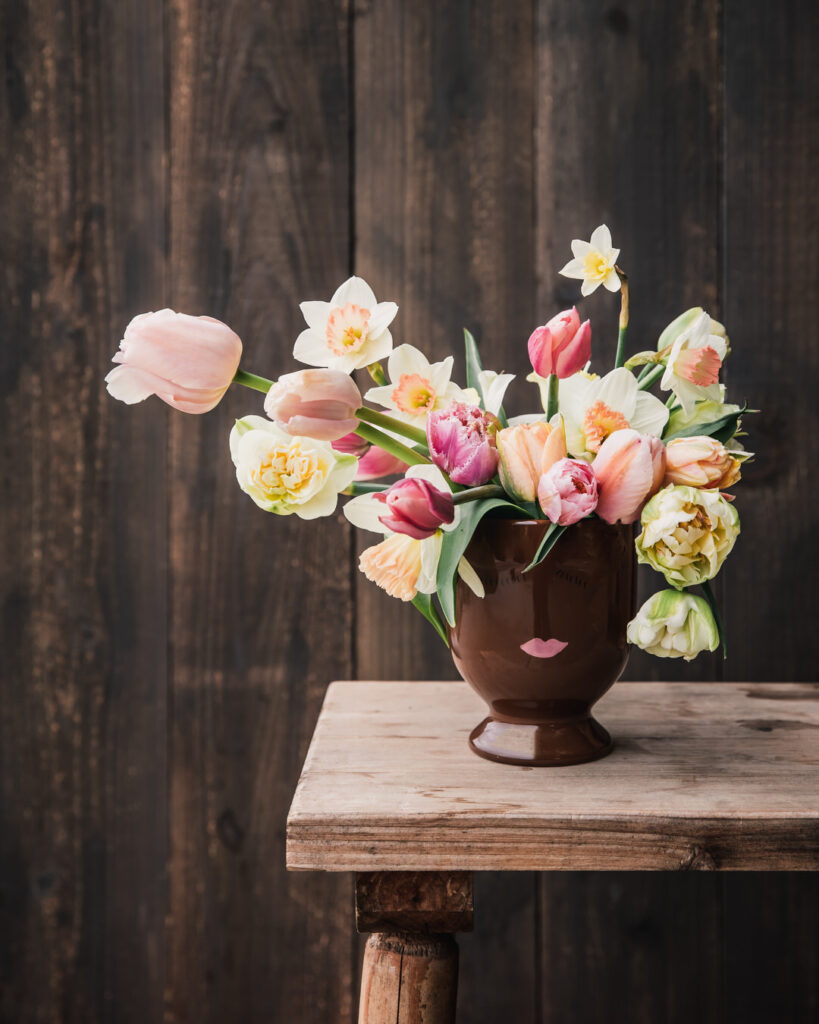

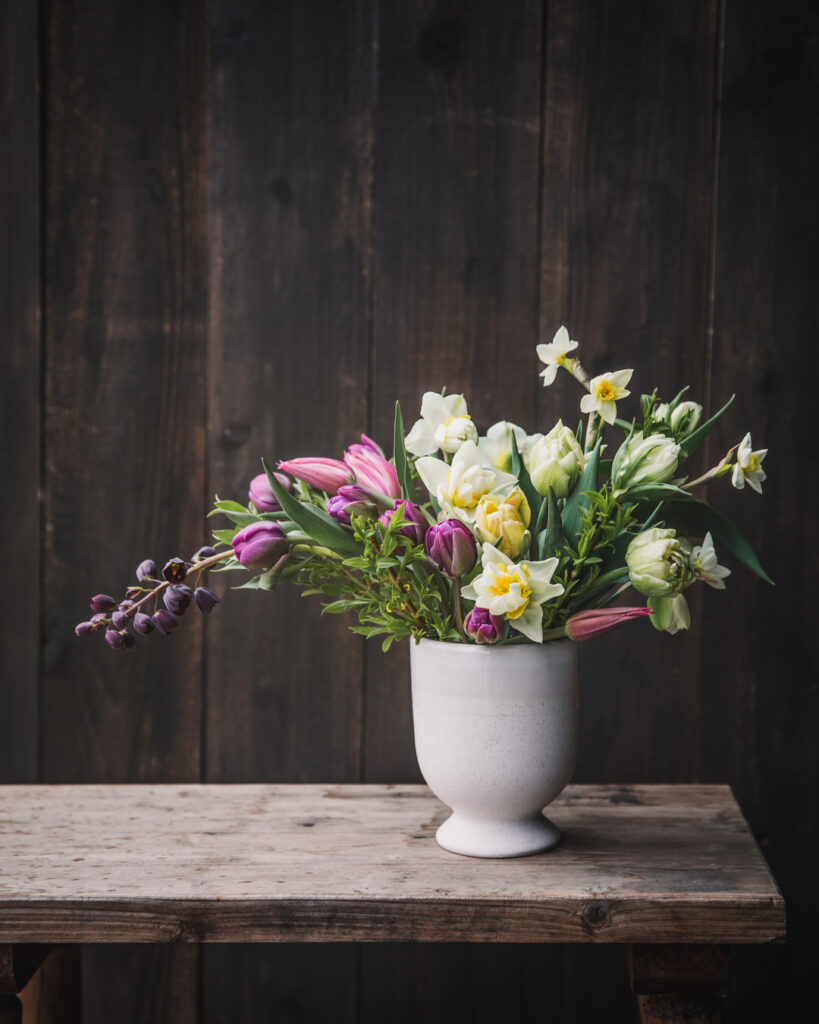
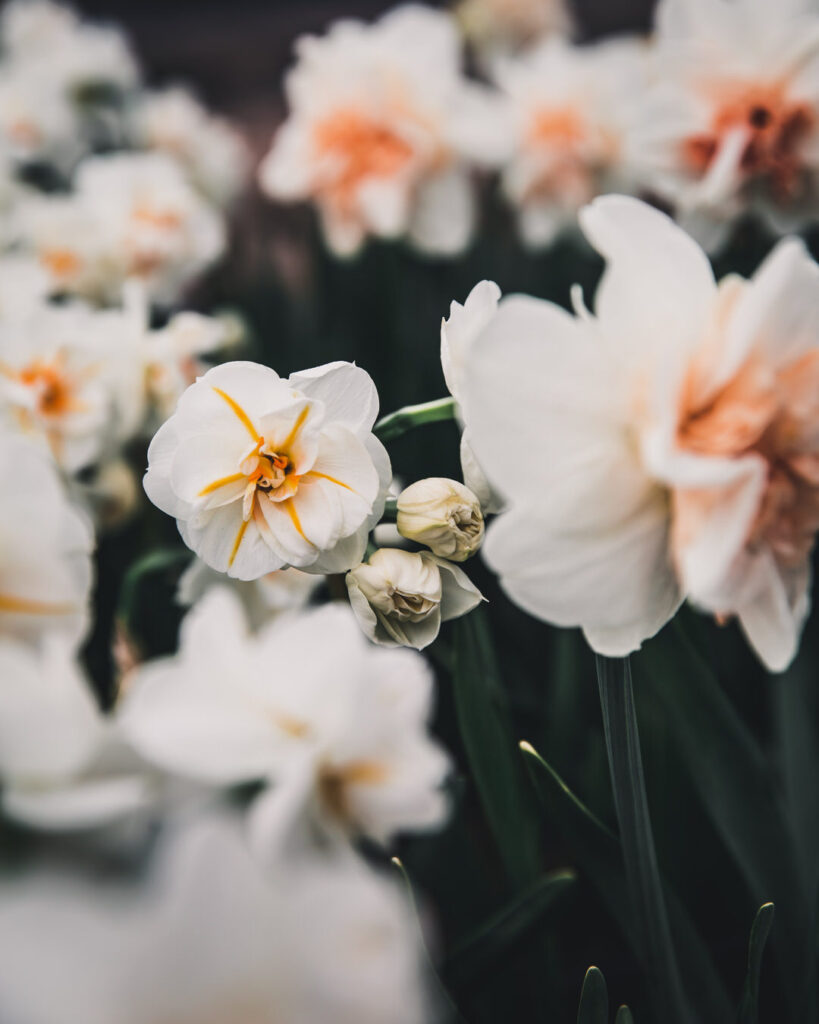

Wrap Up
OK, my friend, that is IT for November’s Plant Profile. What do you think? Did you find some useful nuggets? Is there anything that’s unclear or you wish I would have covered? Or is your head spinning? No worries, you will get a copy, so you can always refer back it. Tip: use the find shortcut (Ctrl+F on a PC or Command+F on a Mac to search for any word or term).
Have any questions or something you want to share with me or others? I know I say this ad nauseam, but I truly believe in the power of the collective and that we all have something unique and powerful to share, so please leave a question or share a comment below. We’re all better for it, and I thank you in advance!
Cheers pal!
cLICK FOR Comments +